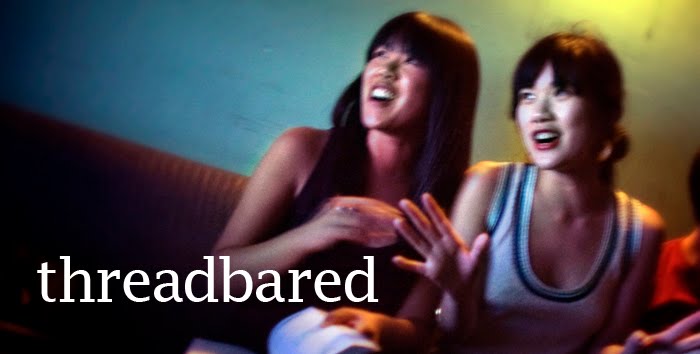 Pictured are Emily Larned's Lookbook 54 and Fredric Jameson's The Political Unconscious --which my girlfriend puts under her head to reset her back-- as well as the '60s silver-and-white lace shift dress I wore to our multi-departmental, end-of-the-semester party this weekend.
Pictured are Emily Larned's Lookbook 54 and Fredric Jameson's The Political Unconscious --which my girlfriend puts under her head to reset her back-- as well as the '60s silver-and-white lace shift dress I wore to our multi-departmental, end-of-the-semester party this weekend.Unfortunately, a mountain of grading awaits me before I can begin to post (as promised) on the politics of vintage. (Meanwhile, Jenny at Fashion for Writers continues to be one step ahead of me! Curses, foiled again!) Fortunately, this mountain includes papers and other final projects from this semester's Politics of Fashion course, which include a thrift store ethnography mapped onto a demography of neighboring locations; a hairstyling portfolio that ponders the politics of the updo as "formal" hair; and a poster presentation on the ultra creepy Old Navy supermodelquins (shades of Andrew McCarthy and Kim Cattrall in, of course, Mannequin).
There are also papers on military habitus (humorously --to me at least-- titled "Hooah!"); the politics of breasts (with particular attention to the attribution of class --in its multiple permutations-- to some breasts); British skinhead subcultures and a film analysis of This Is England (dir. Shane Meadows, 2006); the temporal attitudes of the hipster figure who mines the past for the present; the differential distribution of leisure wear (whose leisure is understood as "normal" and whose is targeted as "deviant," and how does clothing factor into the boundaries drawn between appropriate labor and inappropriate leisure); high school dress codes in a moment during which youth are increasingly gender-questioning; and that's just what lies on top on this mountain before me.
So there's a wrench --a delightful but delaying wrench-- in the schedule. Hopefully I'll post in the next week or so with some thoughts on the politics of vintage as a cultural imaginary, as specialized knowledge, as a market designation, as an aesthetic of individuation versus standardization, as a historical sedimentation of race, nation, gender, and sexuality -- as well as a performative possibility for rearranging these anew.



